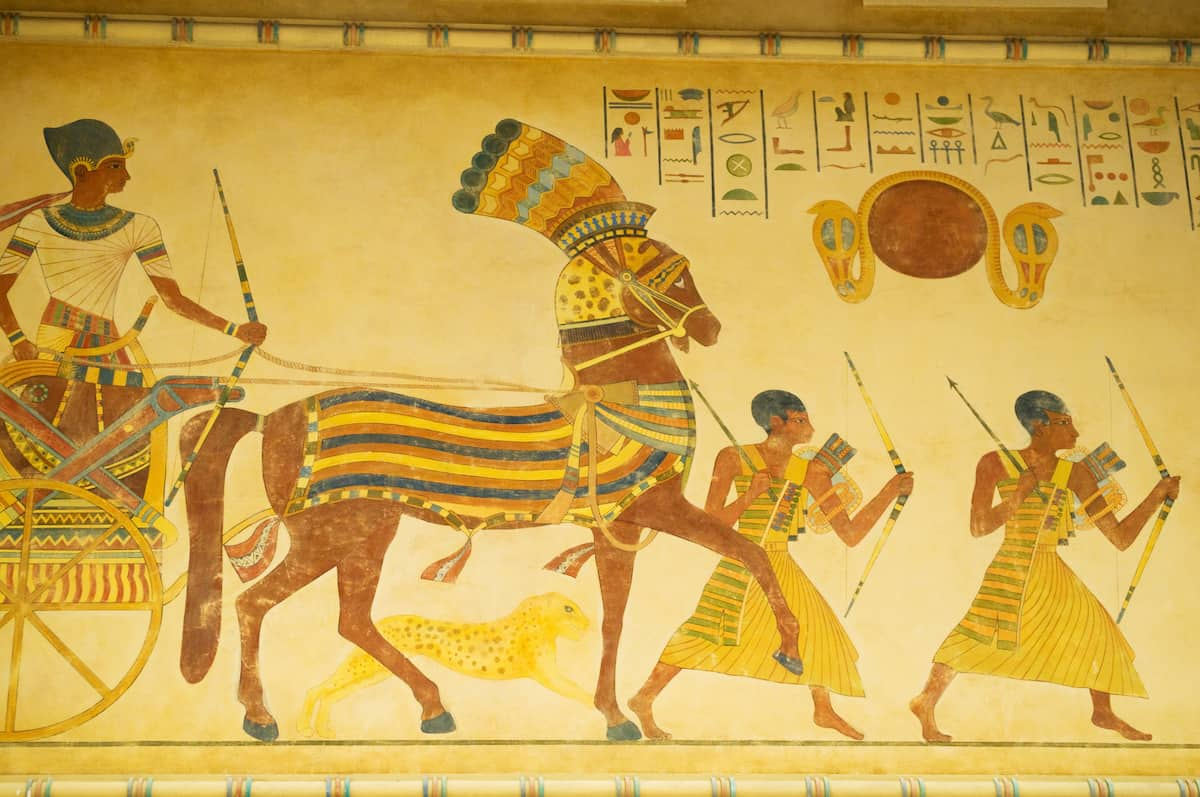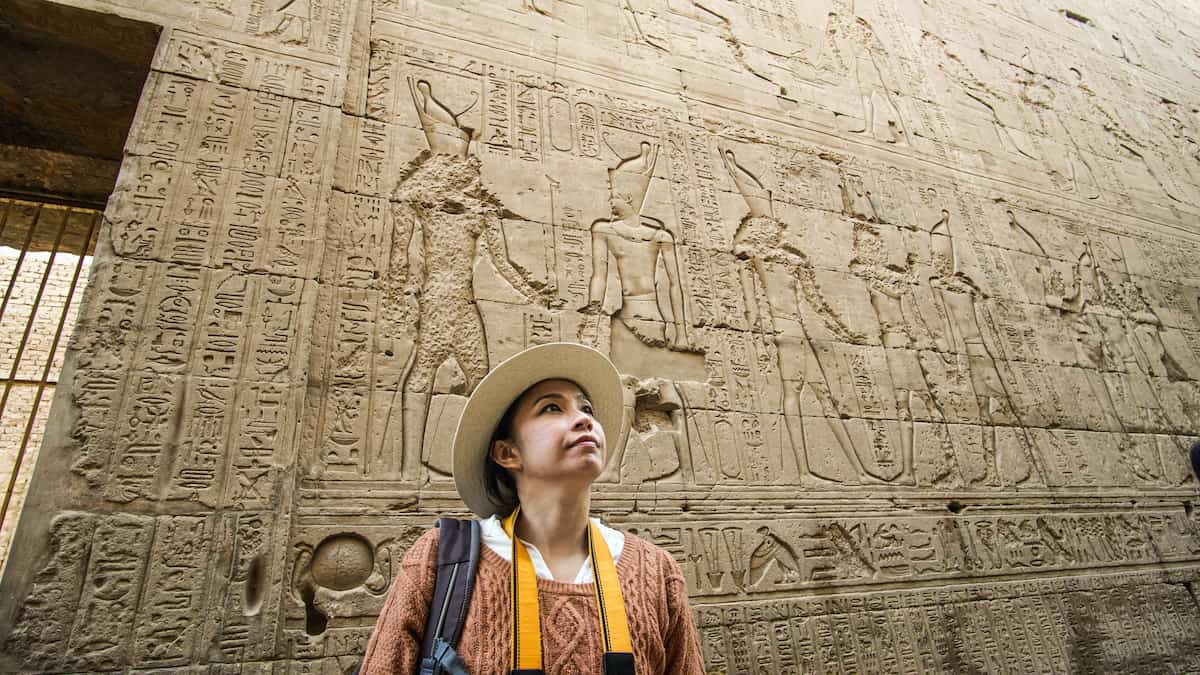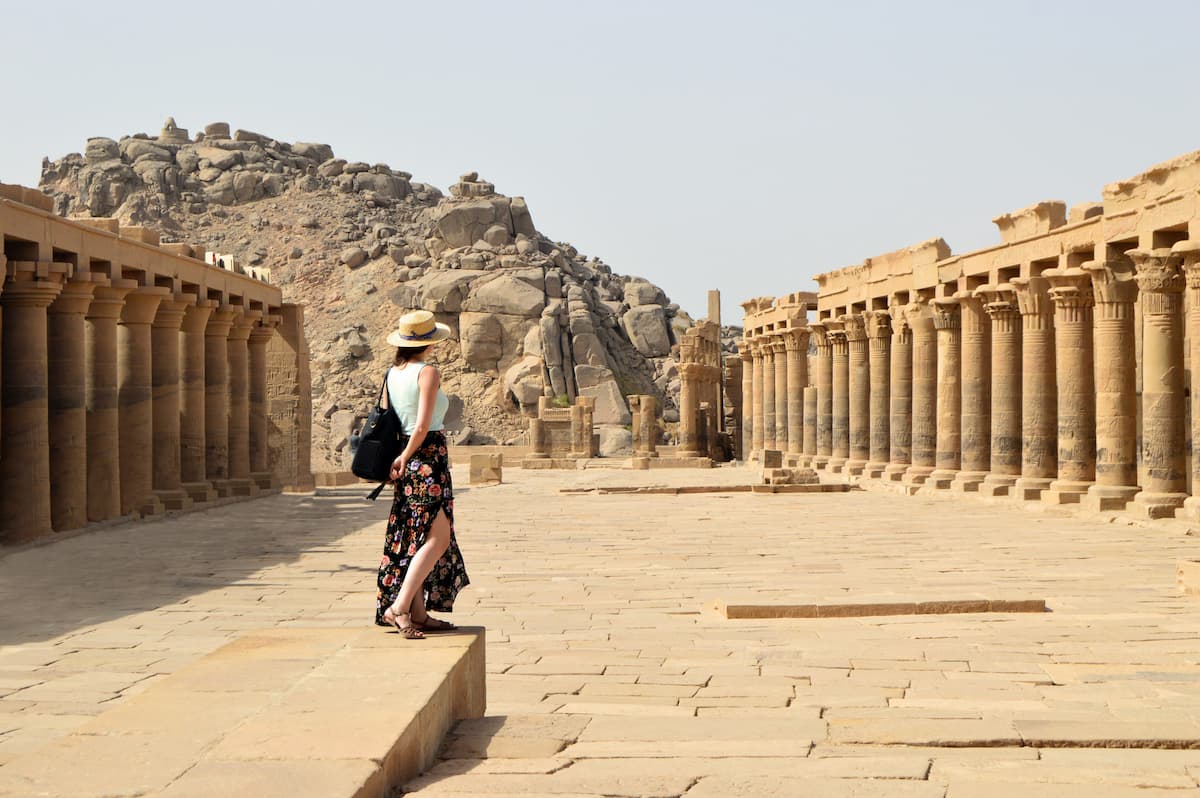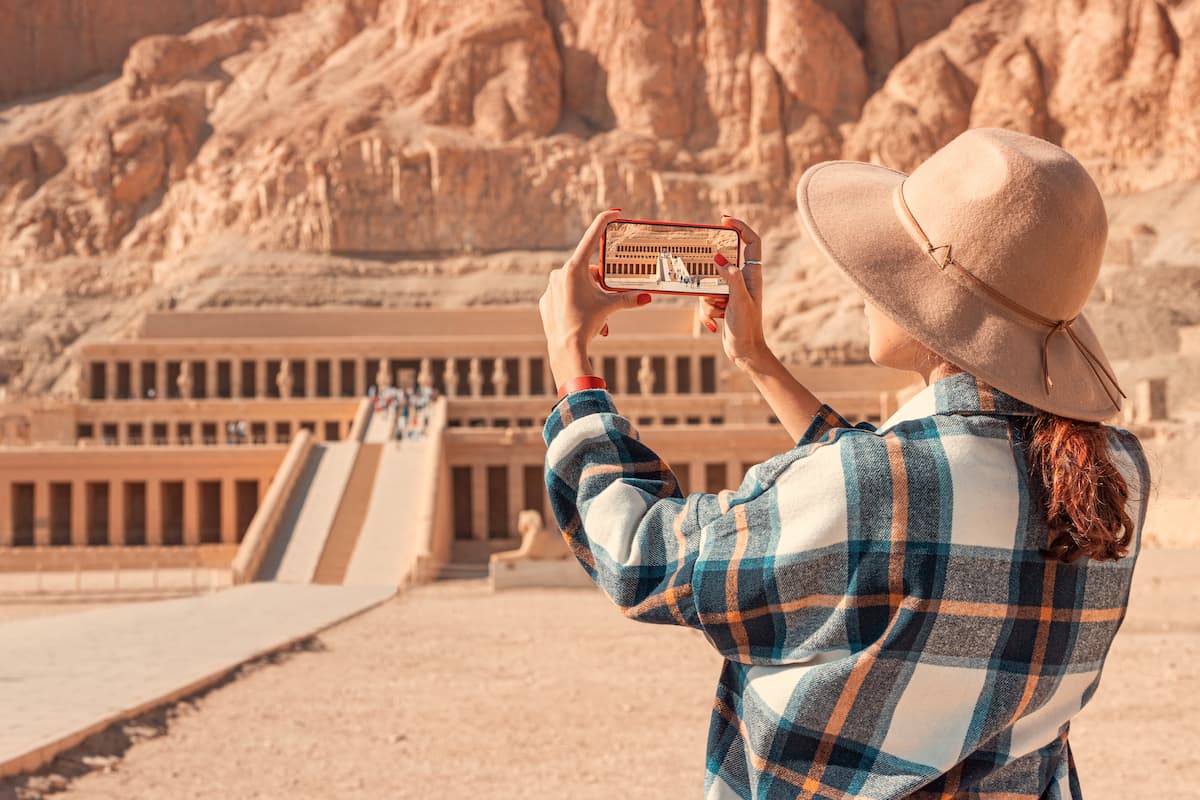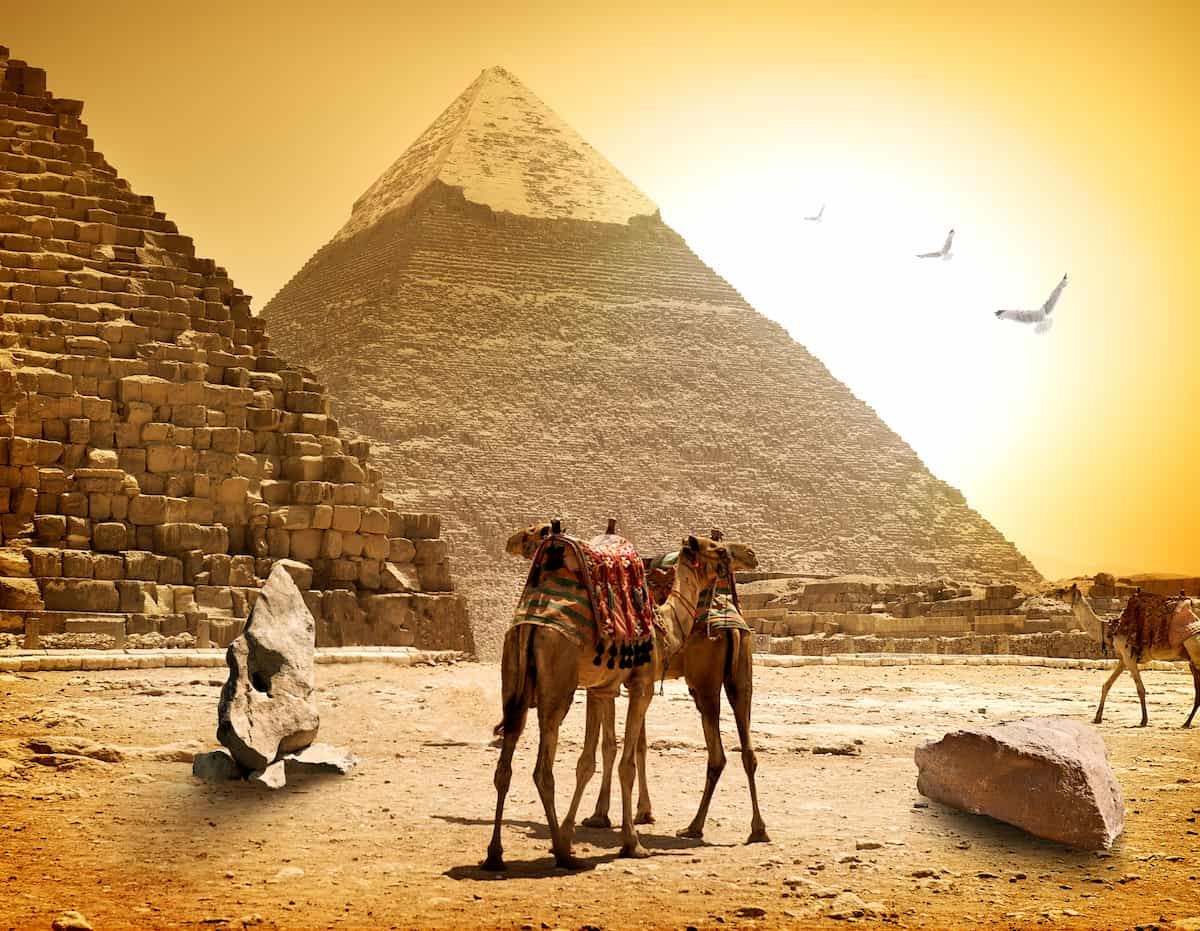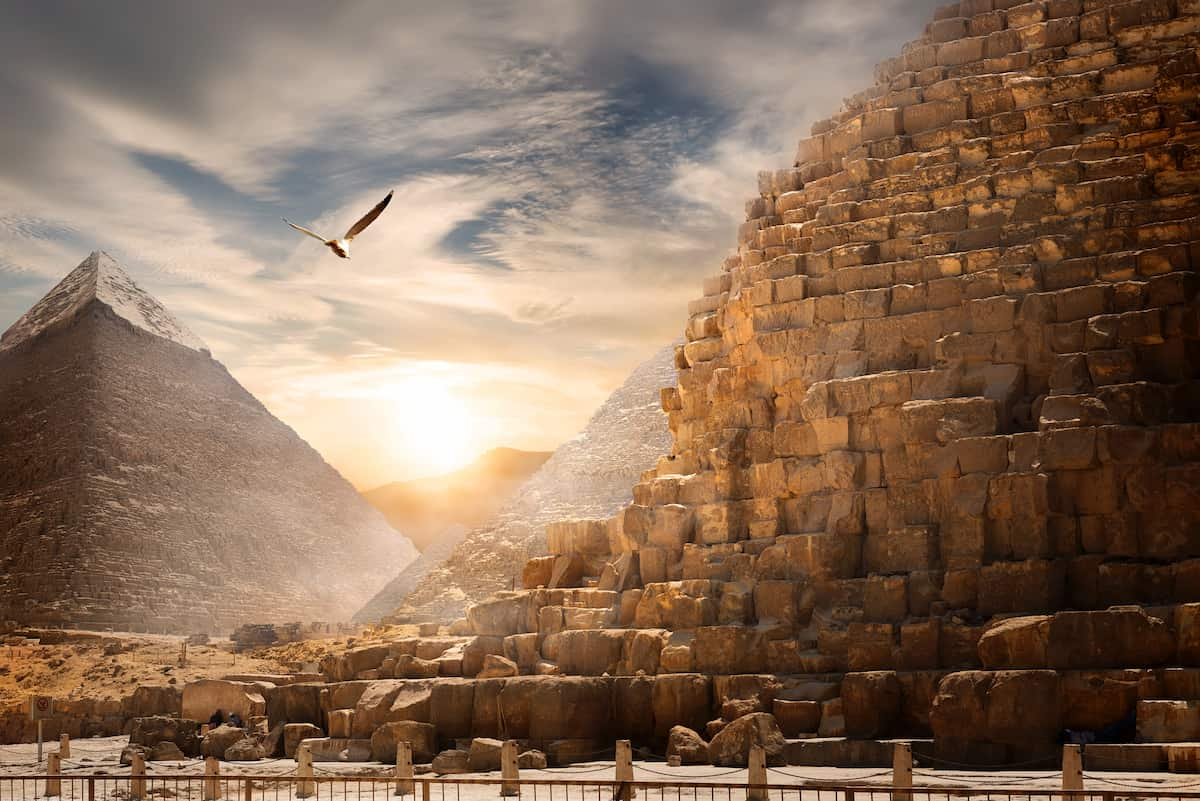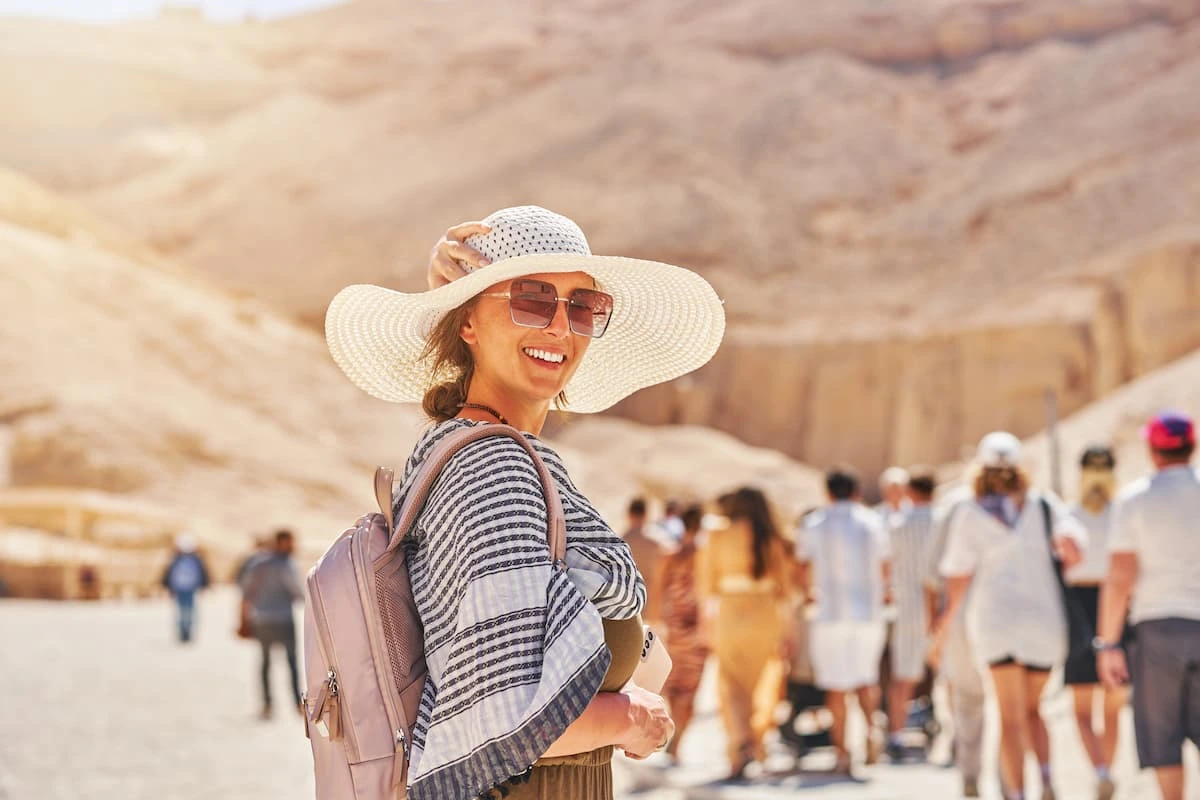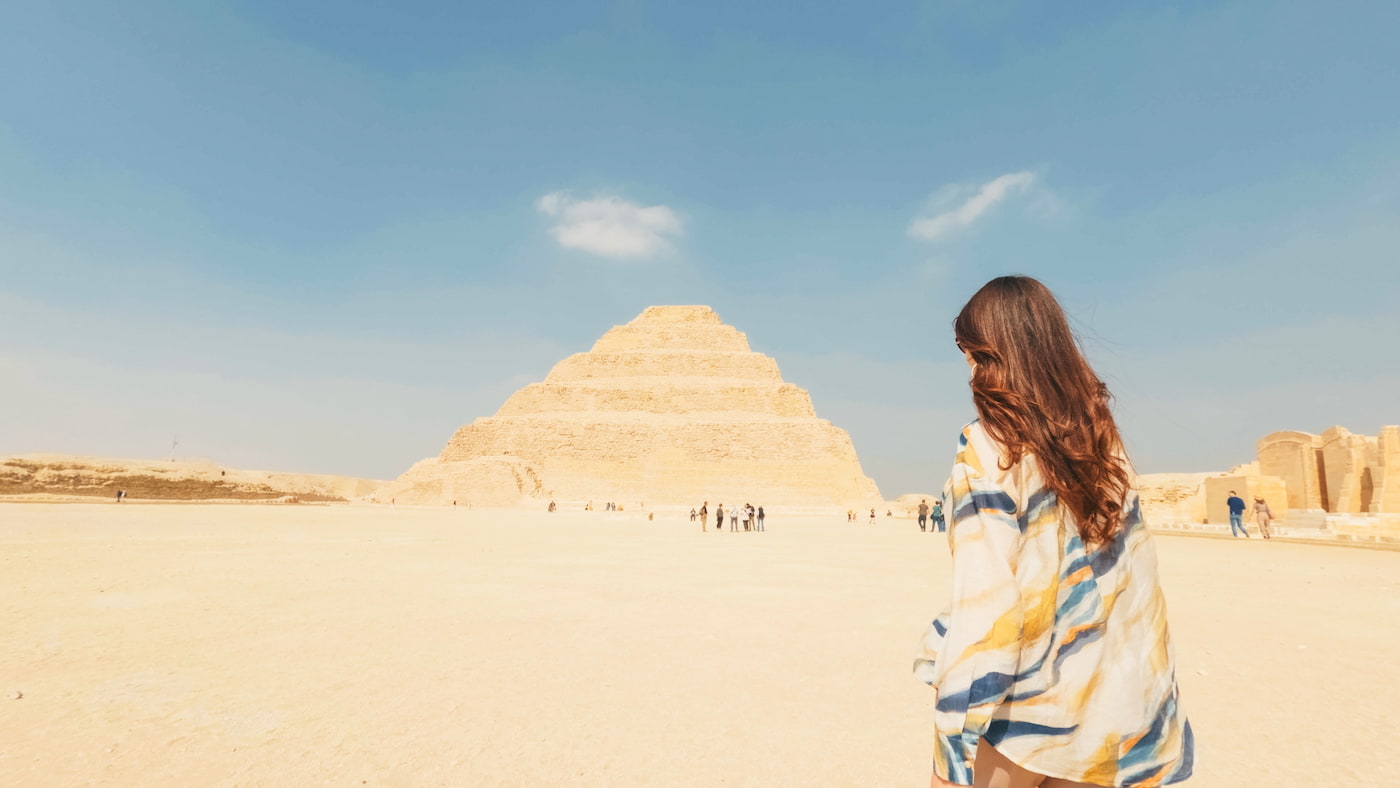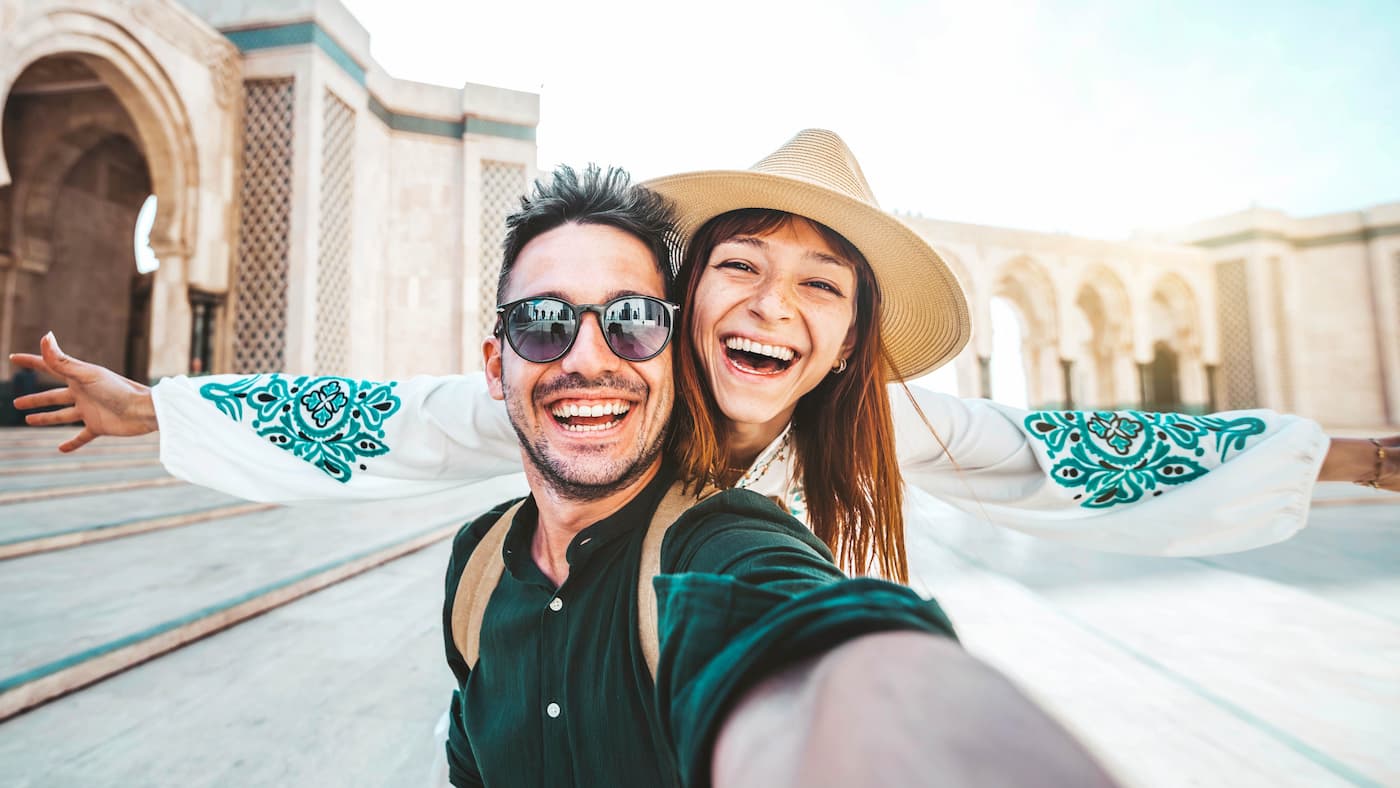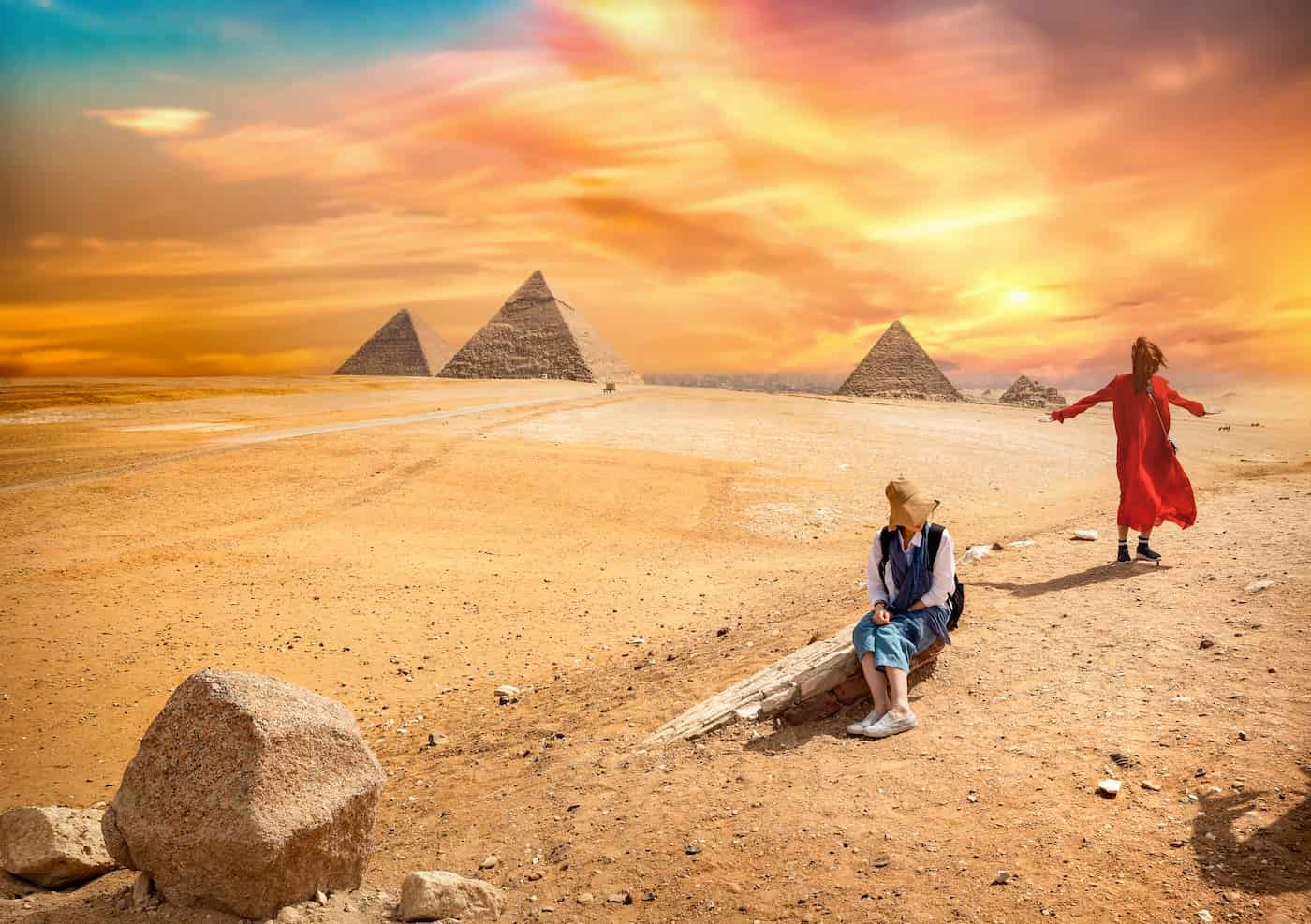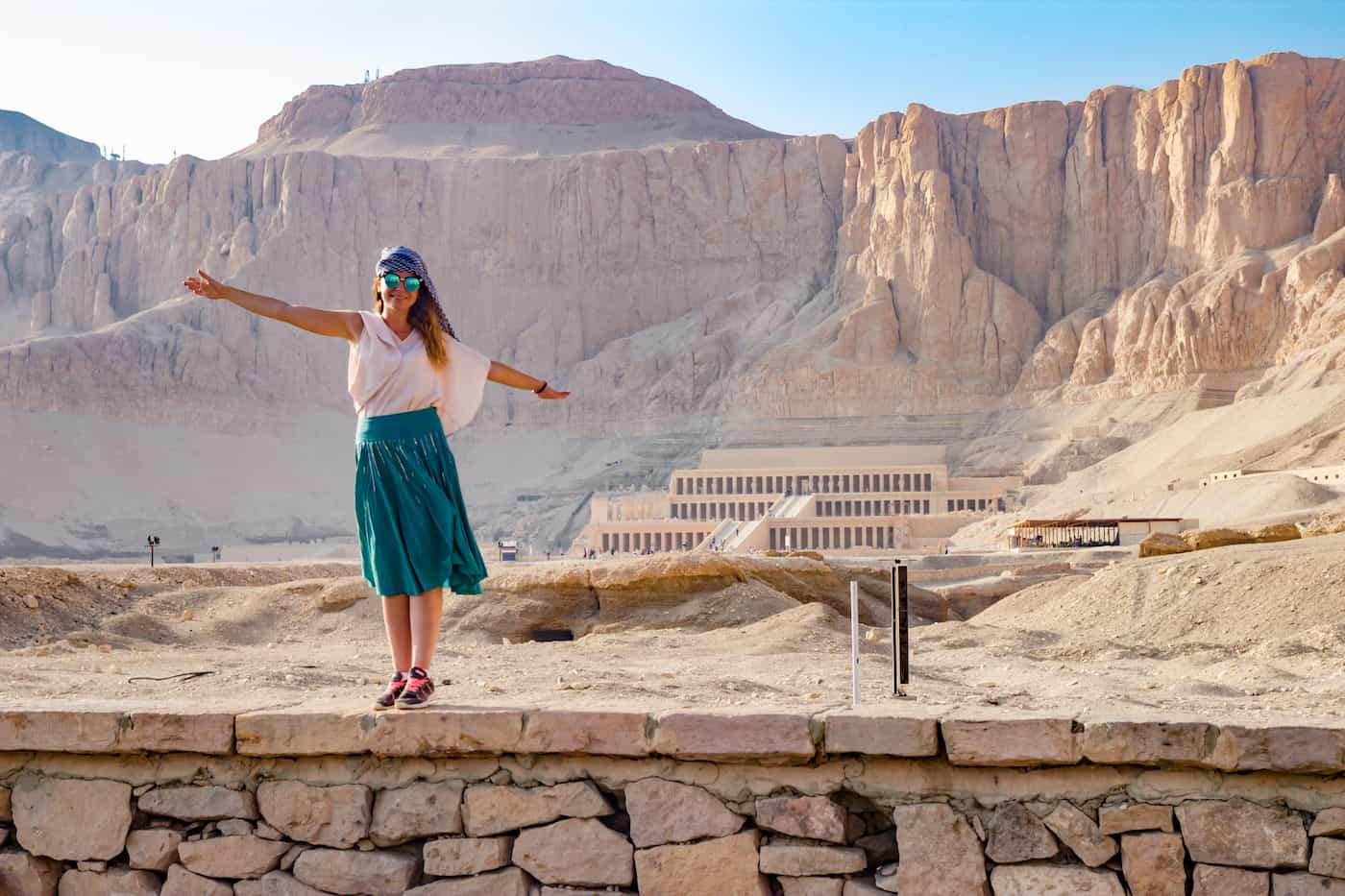Ancient Egypt Social Classes and Social Structure Pyramid in The Ancient Egyptian Daily life
In the history of ancient Egypt, which spanned over 3 millennia, along the banks of the Nile River, we find a remarkable chapter characterized by grand pyramids and influential pharaohs alongside intriguing religious customs and the intricate social framework that defined the ancient Egyptian daily life and people. From pharaoh leaders down to farmers and dedicated scribes to enslaved individuals, each member of ancient Egypt social classes played a vital role within this meticulously ancient Egypt social structure pyramid framework.
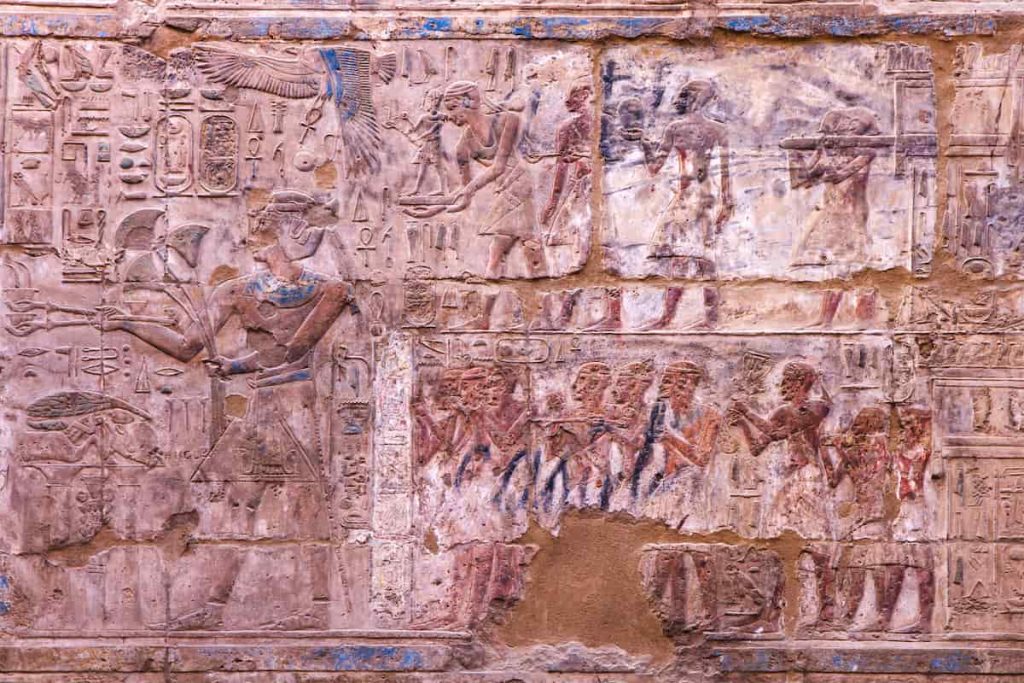
Ancient Egyptian social classes and structure pyramid
Ancient Egyptian Social Structure Pyramid
Egypt in old times had a structure that resembled a pyramid in the the ancient Egyptian daily life activities.
- The Pharaoh Or The Ruler of Egypt
- Nobles and Priests
- Scribes and Officials
- Craftsmen and Merchants
- Farmers and Laborers
- Servants and Slaves
1. The Pharaoh God On Earth
In old times, the ancient Egyptian social structure pyramid was believed to have an origin where the pharaoh was seen as a god like ruler chosen by the gods themselves. The ruler stood at the pinnacle of the hierarchy, with authority in his hands. He wasn’t a leader in politics. Also served as the spiritual figurehead of the nation in the ancient Egyptian life. Rulers were seen as the representation of Horus and upon passing were linked with Osiris, the deity overseeing the afterlife.
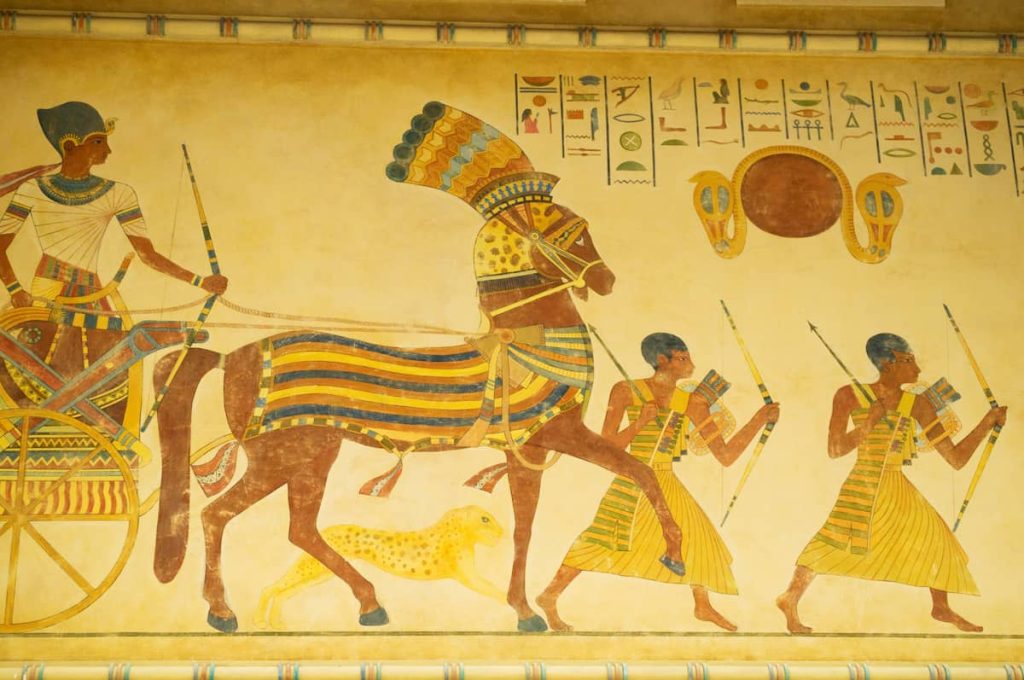
Ancient Egypt social classes and Society Structure Pyramid
The king resided in palaces adorned with jewelry and linen garments and was constantly attended by his entourage of officials and servants throughout the the ancient Egyptian daily life. His routine included engaging in ceremonies and discussions, with advisors while overseeing national endeavors such, as constructing temples or managing irrigation systems. In charge of making sure the Niles floods happened on time through rituals and overseeing laws while also leading the armies and organizing the construction of monuments.
2. Nobles and Priests the High Class in Ancient Egyptian Society.
Below the ruler stood individuals of status (sometimes related to the ruler or affluent property owners) along, with leaders responsible, for overseeing temples and performing ceremonies to satisfy the deities.
Nobles
They were on top of the ancient Egypt social structure pyramid. Ancient Egyptian Nobles resided in mansions adorned with gardens and shimmer of pools. These high level in the ancient Egyptian social classes were overseeing properties and managing employees or servants was part of their responsibilities, in the past. Ancient Egyptian Nobels were enjoying music and hunting were, among his pastimes along, with indulging in banquets and various leisure activities in the ancient Egyptian daily life.
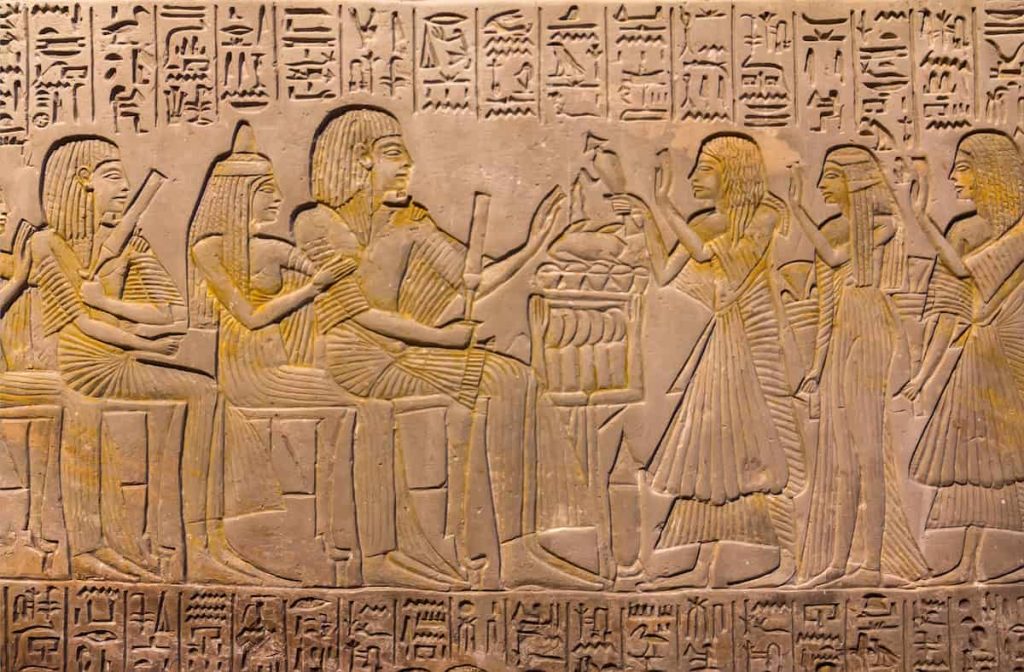
Nobels and High officiels in ancient Egyptian society classes
Priests
In fact, Egyptian priests were the holy people on the top of ancient Egypt social structure pyramid , Priests wielded influence and possessed advanced levels of education. They were also overseeing the upkeep of temples and managing ceremonies including the rituals performed during mummification process was part of their duties. Priests resided in temple compounds, and they followed rules regarding purity, like shaving their heads and taking multiple baths every day.
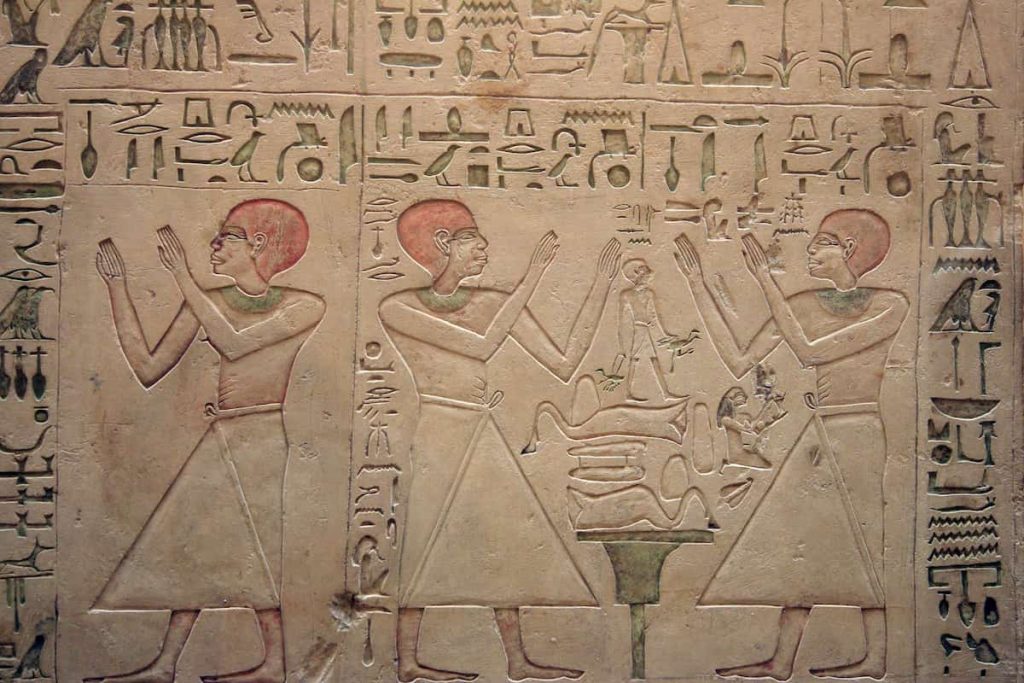
Priests in Ancient Egyptian social structure pyramid
3. Scribes and Government Officials
In a time when few could read or write well scribes were highly regarded and wielded power and influence in the ancient Egypt social structure pyramid.
Scribes Or Holy Writers
Scribes were trained extensively in institutions known as the “House of Life.” Also, they were also responsible of documenting all taxes, dealing with court rulings, business, and the temple archives.
Government Officials
Another type in the ancient Egyptian social classes were the Government Officials. They were included in the group were viziers who served as ministers along, with tax collectors and provincial governors. High Government officials were administering justice, along, with handling tax collection and overseeing public infrastructure projects. Government officials were always on a high level in ancient Egypt social structure pyramid.
4. Crafts Men and Artists – The Talented Laborers
They were skilled individuals may not always receive compensation as their reputation is often tied to the excellence of their work and support, from either the government or affluent individuals.
The skilled craftsmen and artisans who crafted the temples, tombs, statues and jewelry that we still appreciate today were situated beneath the educated elite in the ancient Egypt social structure pyramid.
There were many types of artists in ancient Egypt. the major ones were the stone carvers and painters work alongside goldsmith. Also, sculptors as carpenters and potters in various professions. Artists resided in cozy residences; in laborer communities such, as Deir el Medina close, to the Valley of the Kings.
At Deir el Medina we get a peek into the lives of artisans. It reveals that they lived in communities where they wrote letters and settled disputes. Enough they even went on strikes here. Marking the recorded labor strike, in history.
5. Farmers and Workers of Egypt – The Founders of the Nation
Most people in Egypt worked as farmers. Resided in humble mudbrick houses situated by the Nile River.
Farmers and workers wake up at the crack of dawn to take care of their crops like wheat and barley as tend to their livestock. They utilized tools such as plows for farming and sickles for harvesting crops along with baskets, for gathering produce. On the other hand, they rely on the inundation of the Nile for fertilizing their fields.
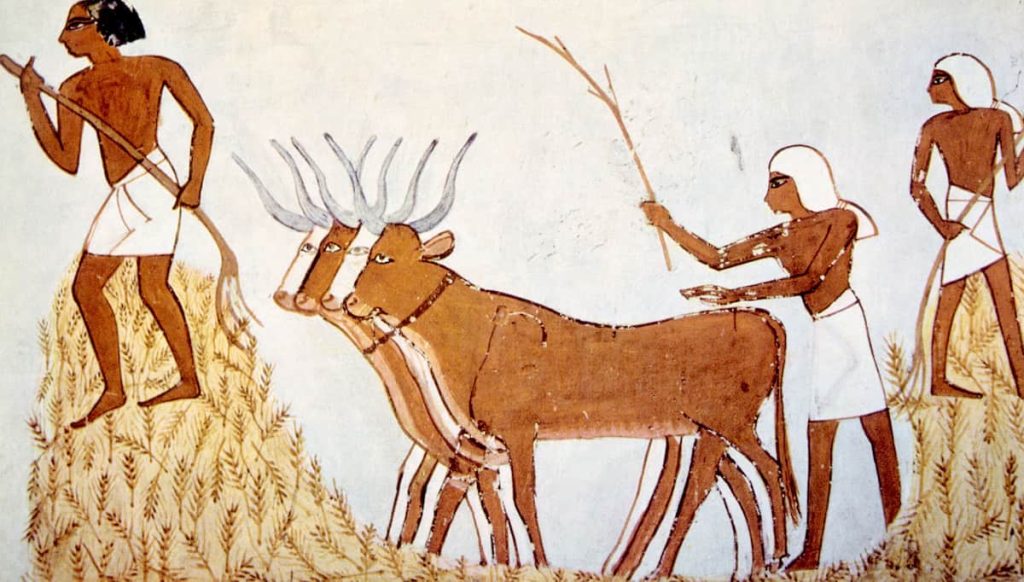
Farmers in the ancient Egyptian Sociel Structure Pyramid
For paing their taxes they had to pay it in grain or labor known as corvee service, which often involved working on the construction of temples or pyramids.
Farmers played a role, in Egypts economy and food production despite their position, at the end of the social hierarchy.
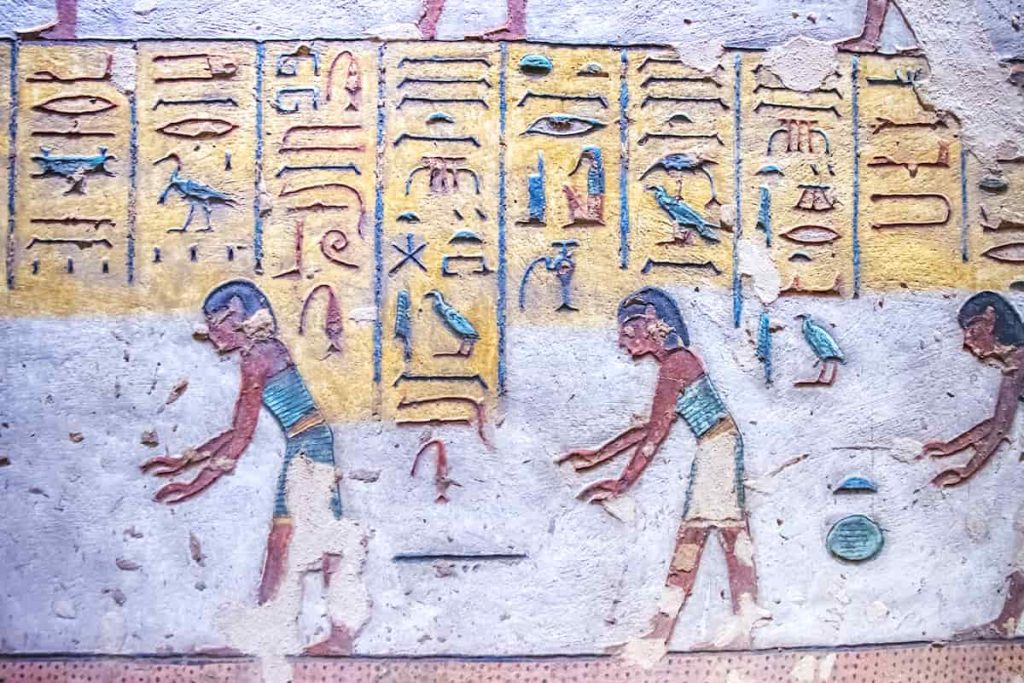
Workers in ancient Egypt society
Slaves and servants occupied the rungs of society, in Egypt; however it’s important to note that the concept of “slave” back then differed significantly from our present day understanding. they were often they individuals captured during wars or those involved in activities may find themselves in situations, like being burdened with debt in Egypt.
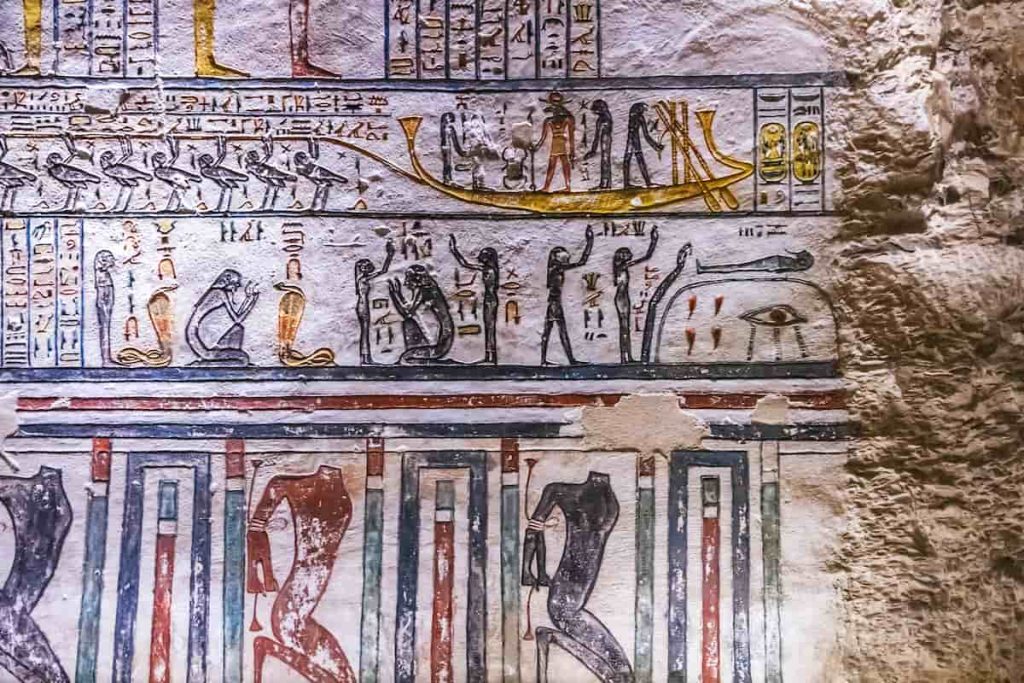
Slaves in ancient egypt life and society
In the past they served in households, sacred places or the estates of kings and queens. Slaves were occasionally able to possess property or even acquire their freedom.
Servants assisted in tasks such, as preparing meals and maintaining cleanliness in the household while also caring for the children and managing responsibilities.
In contrast, to civilizations of the pasts Egyptian servitude did not discriminate on the grounds of race or ethnicity.
Families Among the Ancient Egyptian Social Classes
In society, the family played a crucial role. While men often led households, women enjoyed rights compared to other civilizations. People, in the past, engaged in occupations outside of their homes such as farming, administrative work and trade or serving in the military.
Men and Women In Ancient Egypt Social Classes
Men were always taking care of their families’ needs for food and secure housing. While ancient Egyptian women managed their houses, while also cared for the children and occasionally engaged in activities. Women had the ability to own property independently and take the initiative to seek divorce if needed, while also having the opportunity to inherit wealth from family members or other sources. Some women even held positions, as priestesses or scribes, and they also had roles as overseers. Men dressed in kilts while women adorned themselves in sheath dresses. Both males and females groomed their body hair. They used fragrances, along with makeup, like eyeliner and blush. The upper level in ancient Egypt’s social classes often favored wearing wigs as a practice.
Children In Ancient Egyptian Society
In ancient Egyptian times, children were valued and frequently given names inspired by deities in honor of their existence and significance within the family structure. Boys would apprentice under their fathers to learn various trades, while girls received education in domestic affairs from their mothers. Toys, pets such as cats, dogs, monkeys, and engaging in games were integral components of their everyday routines and activities. Children would frequently go without clothes until they reached puberty.
Family Houses In Ancient Egypt Life
Luxurious houses in ancient Egypt had rooms, alongside beautiful gardens and swimming pools. The rooms were adorned with walls and intricate furniture pieces. The structure of ancient Egypt houses was crafted from mud bricks adorned with washed walls that gleam under the suns rays. the standard ancient Egyptian family had a small house, with two rooms and flat roofs.
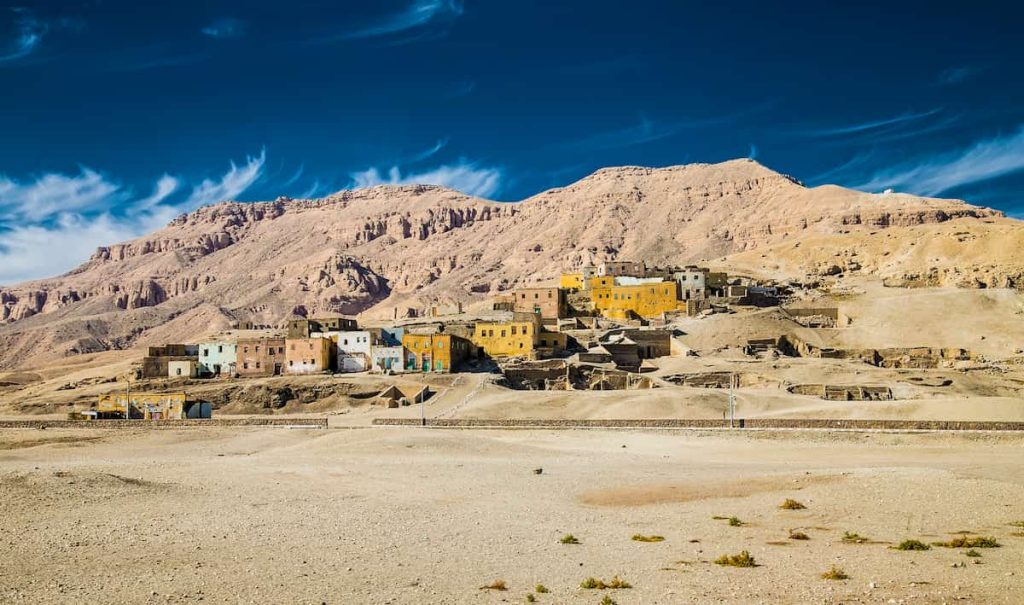
Egyptian houses now similar to ancient days
What Ancient Egyptian People Eat and drink?
The Nile blessed Egypt with soil and plentiful fish, which influenced the diet significantly. Beer, made from fermented barley, was the drink of choice for people at that time. Meat is not widely accessible, for the population with a focus on fish and poultry as the options available to them. Elite gatherings featured feasts, with beef and wine alongside fruits, while musical performances and dancing added to the festive ambiance.
Social Entertainment In Ancient Egyptian Life
Music and dance played roles in the lives of all ancient Egyptian social classes. Performed during ceremonies and social gatherings, dances hold a role in various cultural settings. Communities frequently come together to celebrate festivals and public holidays with processions and feasts that pay tribute to deities through performances.
Music reached its peak during the time of ancient Egypt. The musical instruments of ancient Egypt included harps, flutes, drums, and the special rattle known as a sistrum. Music existed in temples as well as in parties and large festivals. This also meant a lot of dancing. Music and dancing were welcome at weddings, feasts, and royal occasions.
Entertainment Games in ancient Egypt were a big thing. Senet was the most famous board game, which was discovered in many tombs. Children and adults used toys and balls for play, and also wrestled or ran races outside. These types of games helped people to relax and to be friendly with friends and family.
Festivals were celebrated to honor gods and goddesses, in the meantime involving food and beverages, music, and colorful shows, they bring on one’s best attire to a social gathering. In ancient Egypt, fun had a similar standing to labor. Being entertained made people happy, made people come together, and made people appreciate the beauty of life.
Education In Ancient Egyptian Society and Life
Education was always a must for men from aristocratic families. Scribes were very high people among ancient Egypt social classes; they were very close to the royal family. So, all noble families wanted their kids to receive a good education to be Scribes. Girls typically didn’t go to school unless they came from families. The educational curriculum consisted of teaching reading comprehension and writing skills alongside concepts and religious teachings. Temples were hubs of education and scientific exploration. Ancient Egyptians delved into the fields of astronomy and mathematics while also focusing on studies.
Religion Among Ancient Egypt’s Social Classes
Religion was a part of life in all the Ancient Egyptian social Classes. It extended beyond just temples to influence daily life in homes and workplaces as well, as in the fields. Ancient Egyptian people used to pray to their household deities seeking protection and blessings, for fertility and prosperity goals. They used to wear amulets and charms to bring them fortune and luck. In ancient times Egyptians viewed death as a transition from life, and they dedicated significant resources to preparing themselves for the afterlife by constructing tombs, offering sacrifices and practicing mummification.
Conclusion
Civilization along the Nile was existed due to the powerful ancient Egypt social classes and structures as well as the powerful leaders. It represented a lively and strong community that valued orderliness as well as religious and traditional beliefs deeply respected by all individuals, no matter their social status or occupation. Their existence was influenced by the Nile’s patterns, religious principles, and society’s framework in the ancient Egyptian daily life. The Egypt society in old days didn’t only build pyramids. Also, they showed us valuable lessons on living in balance with nature and the spiritual world—a legacy that has stood the test of time, throughout history.

